Revisioning Roads as a Civic Landscape

The road is a public landscape
The streets of Dhaka present a riot of people, vehicles and activities, without a proper place for each. What is needed: Regular vehicles need to be separated from motorbikes and bicycles. Pedestrian area should be clearly delineated along with proper, adequate and functioning street crossings. Such crossings should not be placed randomly but according to the logic of the overall street. Pedestrian area should have designated zones for walking, and for other amenities or activities, such as vendors, bus stops, public toilets, etc.
If after thousands of years of human civilisation, we crawl on our roads in our vehicles at 7km per hour and die untimely deaths just by walking, there is something wrong with the picture. And if roads are, according to Sam Schwartz, former traffic commissioner of New York City and transport planning wizard, one of the defining characteristics of civilisation itself, we are left perplexed with the culture our roads describe.
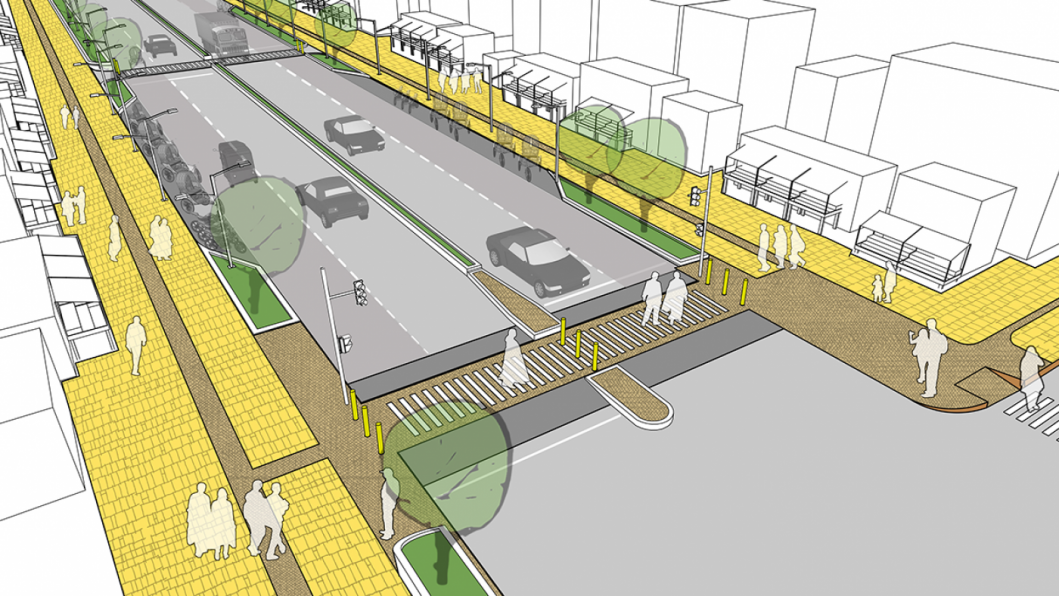
Designing a street section
A street is not only a conduit for the movement of vehicles but a pubic landscape where vehicles and humans coexist, and in which the safety of the human being is priority. With its fragile features, the human is vulnerable to the force of fast-moving motorised vehicles. Along the street, there should be a clear difference between the movement of cars and people. For a wider footpath, a zone of foliage creates both physical and psychological safety. Cars or buses should stop to drop or pick up people only in designated areas. Understandably, all this needs to be enforced for both vehicles and pedestrians, after all the facilities are in place.
We have very suddenly learned quite a bit about our road culture since the tragic death of two students on July 29. We already know how utterly anarchic the traffic in Dhaka is: buses and cars do not maintain lanes, a melange of vehicles cohabits the same road, motorbikes zoom around like drunken gnats, buses stop anywhere to pick up passengers, most vehicles on the road do not have proper papers, people cross roads and highways wherever they please, cars park wherever they please, unfit vehicles ply with impunity, and ram into other vehicles and occasionally plough into pedestrians. Beat-up buses seem like hungry ogres out to devour anything in their way.
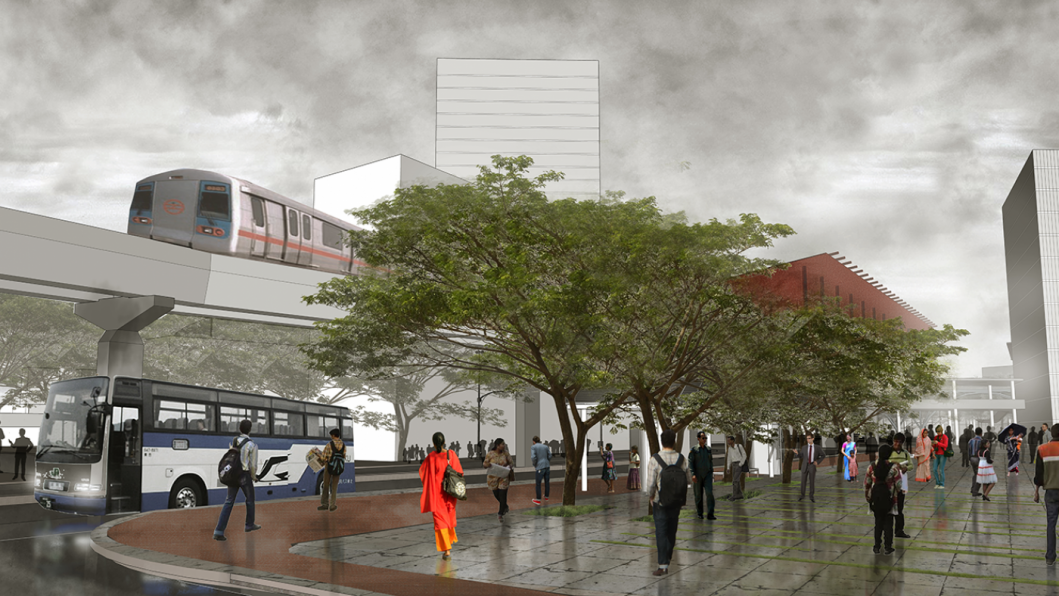
Integrating transit and pedestrian system
For a megacity like Dhaka, the only solution to transport crisis is mass transit, in the form of mass rapid transit (MRT), light rail transit (LRT), and bus rapid transit (BRT). No amount of investment in car-based infrastructure, such as elevated road and flyovers, will help. MRT and BRT are soon arriving in Dhaka. But the success of any mass transit system relies on a generous pedestrian system. People will walk to the station to catch a train or bus. The mass transit system and a pedestrian system form an integral whole.
The best thing to learn from the students' protests over the road killings was that the apocalyptic traffic in Dhaka can be managed. While the movement took a murky, politicised and violent turn, let us not lose sight of the main issue here: The roads of Dhaka are corridors of death and mayhem! No surprise then why Dhaka nearly tops the bottom list of liveable cities in the world. The key word is to "live." The figure researchers cite is astounding. According to a study by the Accident Research Institute of BUET, 229 people were killed in road intersections in 2015, and 401 in 2016, and the numbers are only increasing.
No one will doubt that there is a serious lapse in traffic management and governance. Since the short-lived movement, authorities have started to take some actions to remedy the broken system. If school students have the awareness and audacity to discipline traffic movement (which is not their job to begin with!), and embarrass us by showing that it can be done in this stubborn city, surely a concerted professional and political intervention can do better. If we wish for this megacity of 16 million to be a shining capital of a developed nation, we should start from the road.
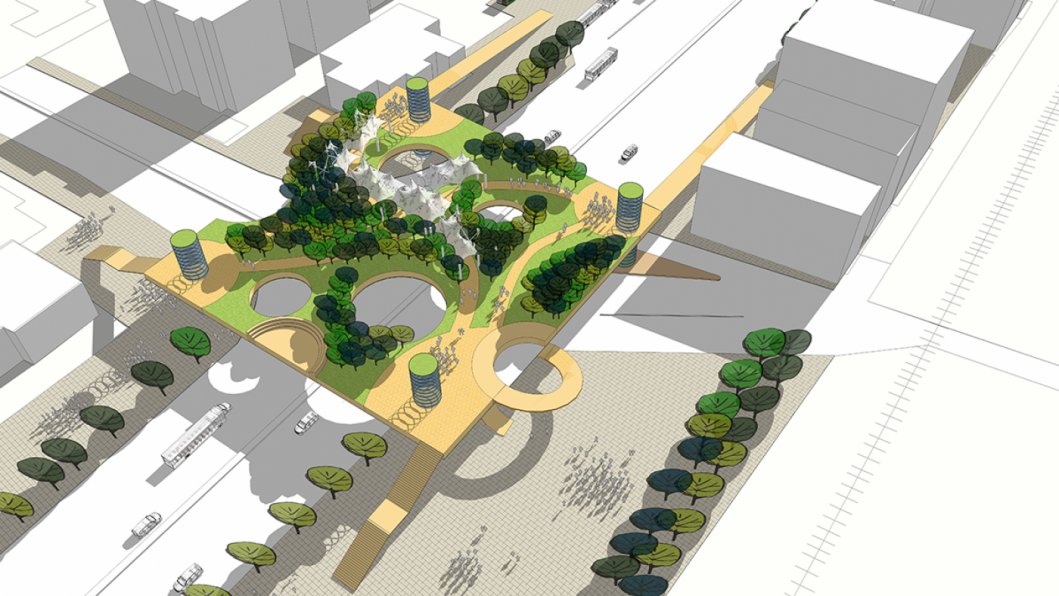
Crossing the street at Kakoli
Pedestrian street crossing is one of the biggest challenges in the streets of Dhaka. Without an adequate and safe crossing system, people get on the street at the risk of their lives. Over-bridges are poorly designed and uninviting, and a difficulty for most people in getting up and down. On top of that, some busy intersections have been labelled as death traps. One such intersection is Kakoli on Airport Road. We imagine an elaborate elevated deck as a pedestrian crossing system that connects all four points of the intersection. Proper stairs, ramps or escalators, and elevators will take pedestrians up and down. The deck itself will be a garden in which walking will be a pleasure.
Despite being one of the fastest growing and densely populated cities in the world, traffic planner Dhrubo Alam notes, Dhaka has a rudimentary transportation system with some odd characteristics: absence of properly planned and organised mass transit system, road space shared by heterogeneous traffic mix, and excessive number of non-motorised vehicles. Of the 30 megacities in the world, four do not have mass transport, and that includes Dhaka.
There are two interconnected issues here: road discipline and pedestrian safety. We emphasise that the road in the city is a public landscape, a space shared by both motor vehicles and humans, one is a mechanised contraption and the other is a vulnerable living being. The road is not merely a conduit for movement of motorised vehicles; it includes passage, movement and crossing for pedestrians. In Dhaka, we forget that the pedestrian is a susceptible human being, whose five to six feet stature, provided the fundamental scale and reference to the spaces of all cities. Until the automobile!

A safe pedestrian system
A diagram illustrating the various conditions and amenities for a safe and efficient pedestrian system. A footpath is not only a corridor of movement but a safe and secure zone for the pedestrian. A well-designed footpath is a continuous landscape ramping down where needed and continued on the street when a crossing is needed. Under no circumstance should the height of a footpath be more than 6 inches! (Diagram from an upcoming guideline for footpaths by the Bengal Institute.)
A walking environment should be the number one priority in any transport planning today. In our cultural schema, we prioritise the movement of motorised vehicles, and place the pedestrian at the lowest level of all policy making and infrastructure planning. We overlook the fact that 40 percent of the people on the move in the city walk. That is why instead of starting the Mass Rapid Transit system (MRT), which would have benefited people of all categories, especially those who would prefer to walk, we glorify elevated roads. And that is why in the futile hope of making cars move, roads are widened by cutting into footpaths (Schwartz, in his widely read book Street Smart, makes it evident that no amount of street widening and additional roads will ease traffic jams). And that is why the footpaths of Dhaka remain the saddest configuration anywhere in the world. Primarily constructed as cover for drains, most footpaths are ironically unwalkable: they are broken into segments, they are obscenely high (sometimes requiring steps to get up!), and when they do exist are often taken over by transformer and police boxes.
Where once the pedestrian ruled, and the city was a place for walking and meandering, and inhabiting its sidewalks and public spaces, now the automobile dictates the term of organising the city. We make roads for cars, and direct all major investments—elevated roads, flyovers, and U-loops—to the promise of an uninterrupted vehicular movement, while we corner the pedestrian to the ever shrinking edge of the road. There, they topple over one another, and hop-scotch-and-jump on a ragtag space not more than four feet wide. No wonder people walk on vehicular roads even at the risk of being run over.
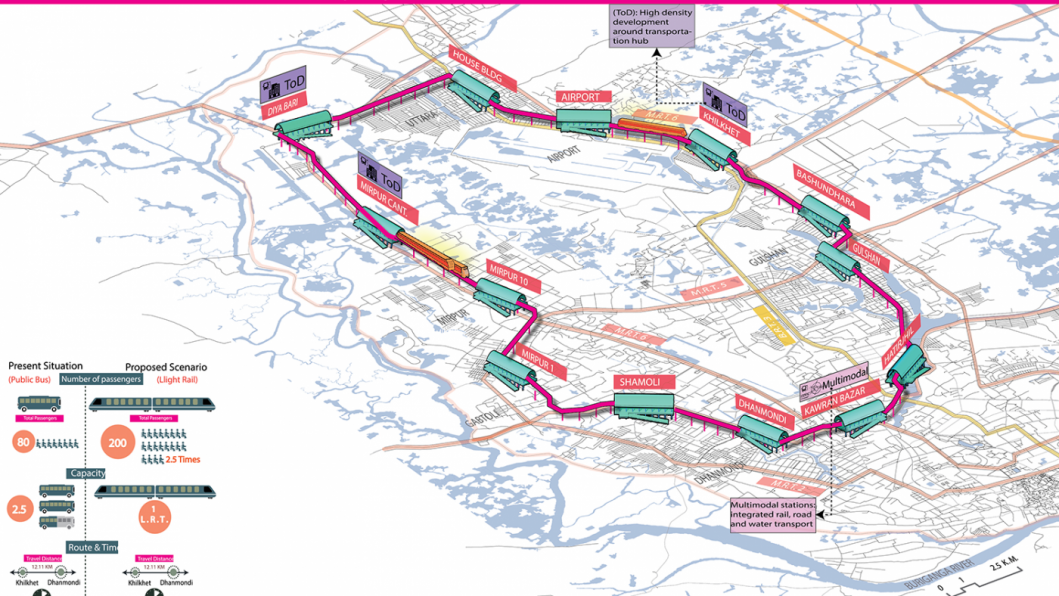
Imagining a Dhaka Circular Light Rail Transit (LRT)
A 40 km line that can connect major areas of the city.
The only solution for the traffic and transportation crisis in Dhaka is Public Transport and Mass Rapid Transit System which can serve maximum people with minimum traffic. Public transport system is not focused on mobility but integrates urban culture, environment, infrastructure and civic life. While work for MRT and BRT is ongoing, a Light Rail Transit (LRT) can augment both, and can be built quickly and inexpensively, and, as a circular route, can connect most areas of Dhaka city. Depending on various conditions, the imagined line of the LRT can serve about 3.5 million people. Our preliminary calculation shows that assuming a 16-hour operation every day, passenger trips per hour will be 68,750 to 125,000 respectively. Imagine the number of vehicles off the streets of Dhaka for that number of people! The yearly operation and maintenance cost is approximated to be Tk 350 crore (USD 44 million) per year. The estimated revenue will be between Tk 1,700 crore and Tk 2,400 crore per year for a reasonable fare structure (ranging between Tk 50 and 200).
And why shouldn't they? Besides the ragged footpaths, there is no proper arrangement for crossing roads. There are no workable "zebra crossings", and pedestrian over-bridges and underpasses are located in wrong places with a dismal and unsafe environment, and poor design.
Consider the Airport Road: What all that hyper decoration has produced is a mere four feet path for pedestrians while most of the space is taken up by irrelevant decorative foliage and signage (when the footpath can be 15 feet wide!). The footpaths are not even continuous: one has to cross a highway to get to the next segment of a footpath. In any proper design for a footpath along a major roadway as the Airport Road, foliage should have been a buffer between the pedestrian and cars, proper and generous over-bridges should have been built at regular intervals in a seamless footpath system, and clearly marked areas should have been designated for a safe boarding of buses. While good management is important, design matters!
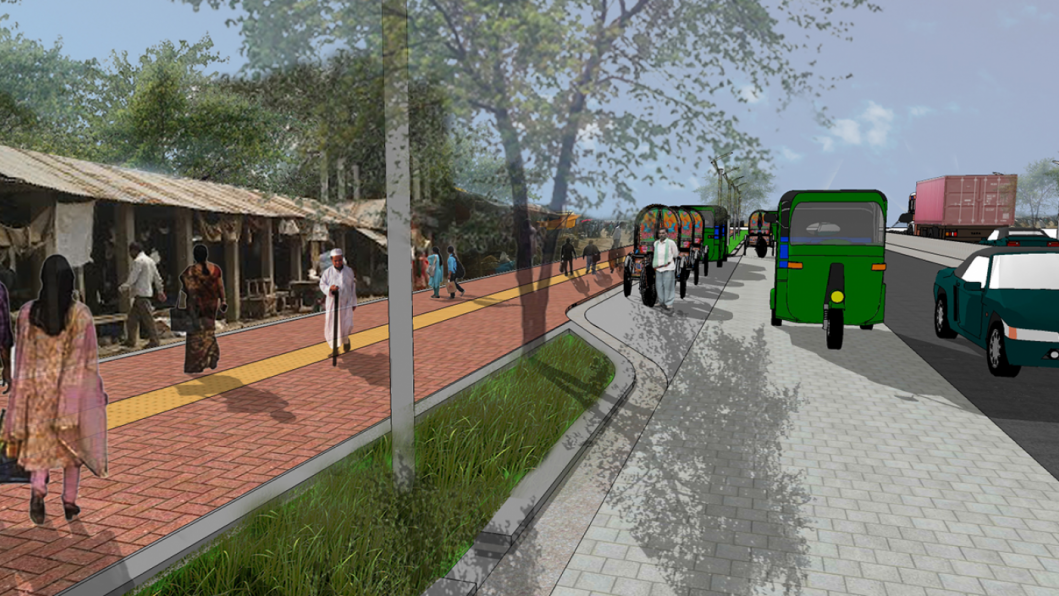
A well-designed street is possible
A visualisation of a road section that shows the various movements and activities that typically take place: separate lanes for different kinds of vehicles, area for parking and stopping of vehicles, clear and continuous pedestrian channel with amenity for the disabled, a foliage barrier between road and footpath, and continuous extension of footpath into the adjoining properties and businesses.
At the end of the day, as designers of the environment, as architects and urban designers, we can only show what is possible and what is best, which policy makers and leaders can choose to adopt and implement. We share here some of the ideas developed at the Bengal Institute for Architecture, Landscapes and Settlements for a possible revision of the transport and pedestrian system.
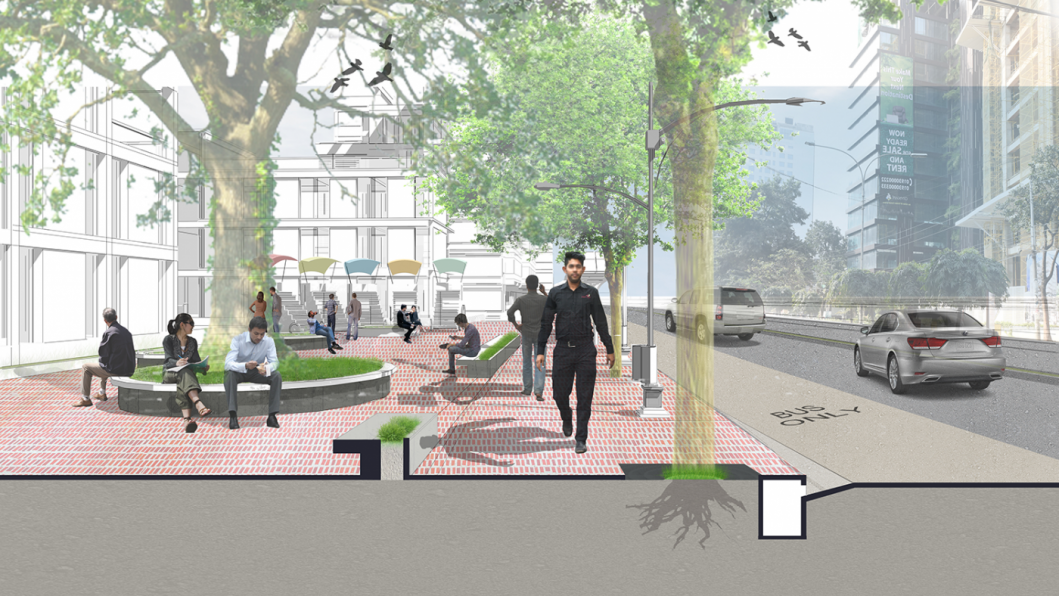
Pocket spaces expand the pedestrian realm
Considering that spaces for pedestrians are limited, city corporations and other state agencies can provide various incentives to merge public and private spaces along footpaths. Pockets of expanded spaces can be created for locating vendors, public toilets, and resting spots. We believe commerce will also expand.
Kazi Khaleed Ashraf is an architect and urbanist, and director-general of Bengal Institute for Architecture, Landscapes and Settlements. The following colleagues were associated in the production of this feature: Saif Ul Haque, Masudul Islam, Dhrubo Alam, Tazrin Ahmed, Afreen Ahmed, Maria Kipti, Hassan M Rakib, and Farah Jalil.






Comments